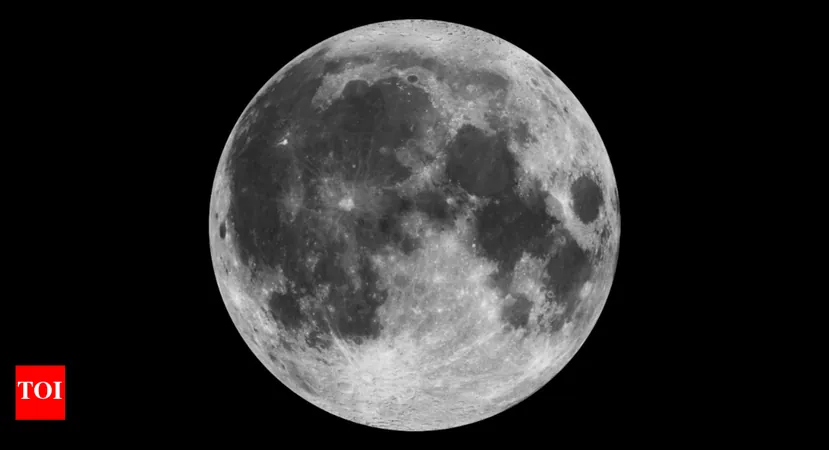
Unveiling the Moon's Water Mystery: Is the Sun to Blame?
2025-04-27
Author: Sarah
A Stunning Discovery About Lunar Water
In a revolutionary breakthrough, NASA scientists have proposed that the Sun's solar wind could be a crucial factor in the formation of water on the Moon. This revelation sheds light on the long-standing question of how water exists on a seemingly desolate celestial body.
The Solar Wind: A Cosmic Water Factory?
Surprising as it may seem, the mechanism behind this lunar water production is relatively straightforward. The Sun continuously emits a torrent of charged particles, known as solar wind, which bombards the Moon unimpeded due to the absence of a protective atmosphere. This solar wind, primarily composed of hydrogen protons, interacts directly with the Moon's powdery surface, called regolith.
When these protons collide with the lunar soil, they can capture electrons, transforming into hydrogen atoms. These hydrogen atoms then bond with oxygen locked within mineral compounds on the Moon, leading to the formation of hydroxyl (OH) or even complete water molecules (H₂O).
Lab Experiments Confirm Theories
To validate this hypothesis, scientists conducted experiments that simulated the solar wind using venerable lunar dust collected from NASA’s Apollo 17 mission. In a sophisticated lab devoid of contamination, they subjected these samples to an equivalent of 80,000 years of lunar solar exposure. The exciting outcome? Researchers observed strong signals indicating that water-like molecules had indeed emerged from the lunar dust.
Implications for Future Lunar Missions
This groundbreaking discovery transforms our understanding of lunar resources. If solar wind can generate even modest amounts of water, future astronauts may have the ability to extract it directly from the lunar soil. This could revolutionize space exploration by providing essential resources such as drinking water, breathable oxygen, and even fuel for interplanetary travel.
The South Pole: A New Frontier for Exploration
NASA’s renewed focus on the Moon’s South Pole—home to potential icy water deposits in permanently shadowed craters—now carries even more significance. Upcoming missions may integrate the mining of these frozen reserves with the process of water generation triggered by solar activity.
A Bright Future Awaits?
Thanks to innovative lab research and ancient lunar samples, humanity stands on the brink of unlocking extraordinary resources hidden within the Moon. Who knows? One day, the solar winds might not just illuminate our nights, but fuel the next giant leap for mankind.


 Brasil (PT)
Brasil (PT)
 Canada (EN)
Canada (EN)
 Chile (ES)
Chile (ES)
 Česko (CS)
Česko (CS)
 대한민국 (KO)
대한민국 (KO)
 España (ES)
España (ES)
 France (FR)
France (FR)
 Hong Kong (EN)
Hong Kong (EN)
 Italia (IT)
Italia (IT)
 日本 (JA)
日本 (JA)
 Magyarország (HU)
Magyarország (HU)
 Norge (NO)
Norge (NO)
 Polska (PL)
Polska (PL)
 Schweiz (DE)
Schweiz (DE)
 Singapore (EN)
Singapore (EN)
 Sverige (SV)
Sverige (SV)
 Suomi (FI)
Suomi (FI)
 Türkiye (TR)
Türkiye (TR)
 الإمارات العربية المتحدة (AR)
الإمارات العربية المتحدة (AR)